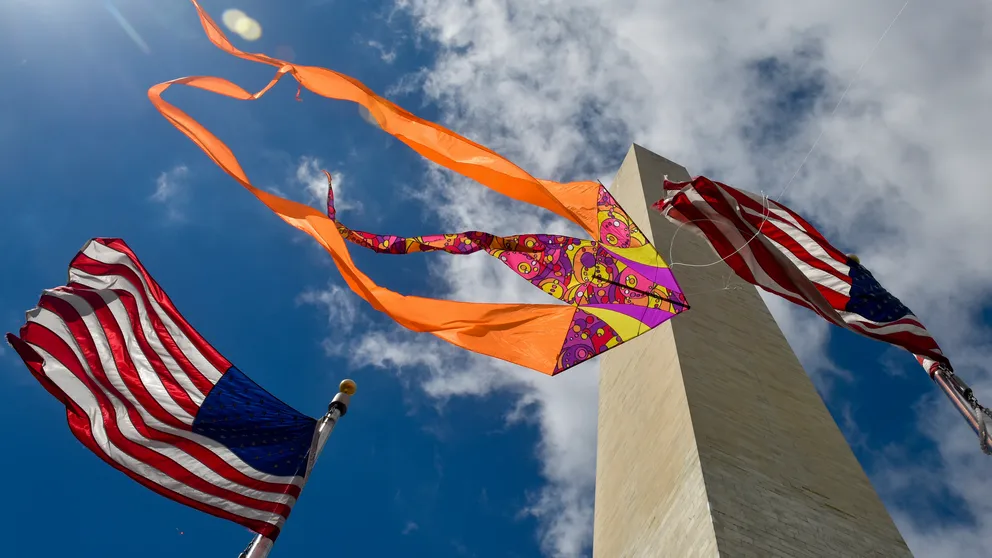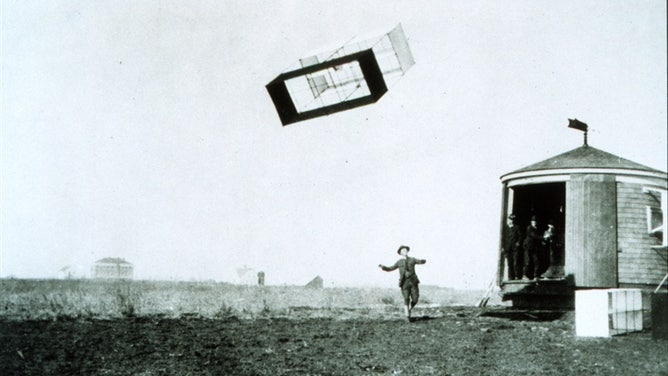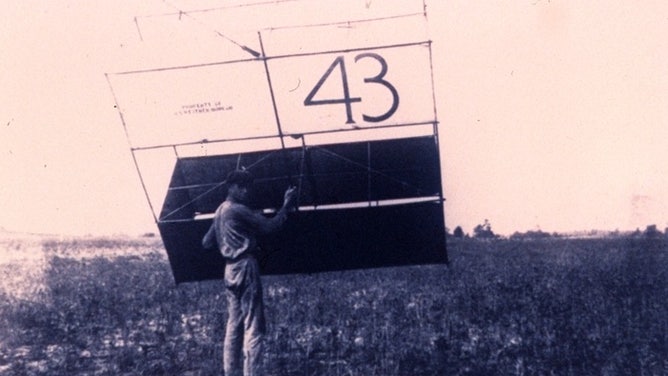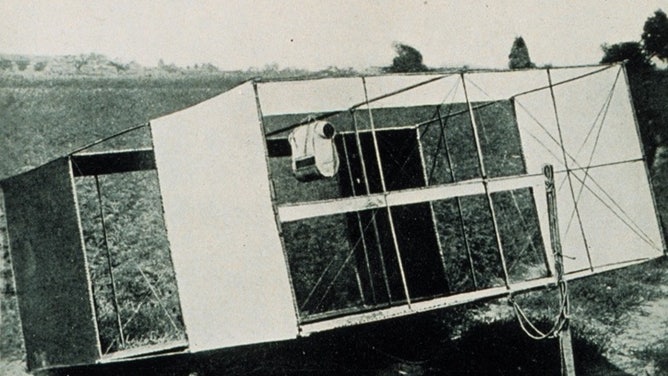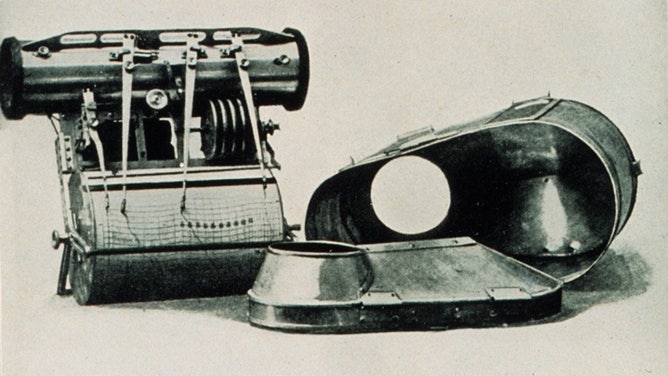Flying high: How kites were used for war and science
Throughout history, kites have been flown to further competition and curiosity
Kites: Not just for fun
Throughout history, kites have been used in matters of war and science.
With the winds of spring comes an old favorite outdoor activity: flying kites.
Although flying kites is seen as a gentle pastime today, they have a long history of being flown for much more consequential endeavors in war and science.
Back to the beginning
"We haven't found the limit of what a kite can do," said Jim Sayce, vice president of the World Kite Museum in Long Beach, Washington.
"It's all based on your hand holding that string and tethering it to the Earth, and there is something extremely ancient and soulful about that in the modern era."
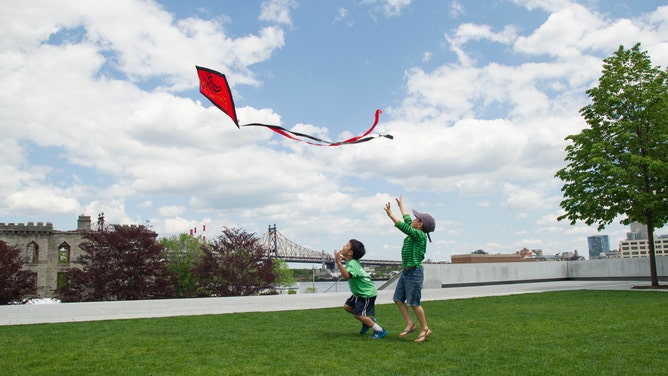
Children chase after a red diamond kite.
(Education Images / Universal Images Group / Getty Images)
According to Sayce, some of the earliest recorded kites were from about 2,000 years ago during the Han dynasty in China.
"They are known to have been big enough to lift a light person aloft," he said. "They were known to be part of commemorations and celebrations that then turned into competitions."
The competitive use of kites then appeared in nearby Japan.

A traditional Japanese kite on display at the World Kite Museum.
(J Brunner / The World Kite Museum)
According to Sayce, battle kites were flown for purposes much gentler than their name would imply. One story tells of two villages that "fought" by flying large battle kites onto each other’s crops or grain reserves.
"It turned into friendly competition," Sayce said.
Over the centuries, the use of kites proliferated and spread throughout the planet, running the gamut well beyond friendly competition.
Kiting for war
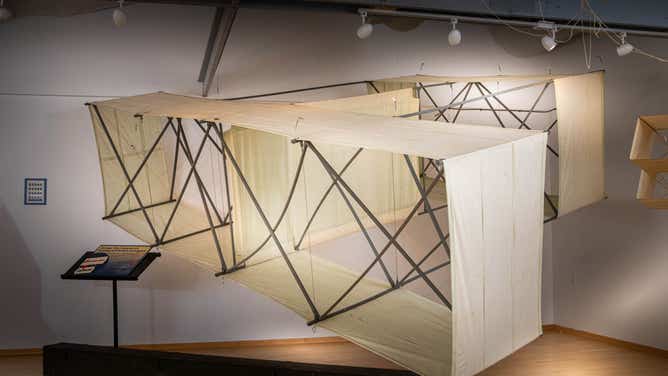
Barrage kite from World War II.
(J Brunner / The World Kite Museum)
In the World Kite Museum, a room called the War Room is solely dedicated to kites used in military efforts.
"A good example is we have a very large barrage kite that would be flown off of a merchant marine ship during the early parts of World War II," Sayce said.
The kite would run a wire cable from the ship up to the sky. So if an airplane tried to attack the ship, it risked flying into the cable, which could severe a plane’s aluminum wings.
Another example is a kite designed in the 1890s, according to Sayce. Triangular in shape, it features an image of a German aircraft fighter similar to a Messerschmitt.
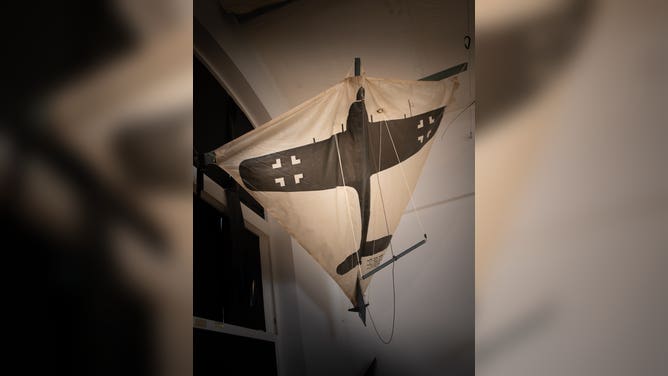
This kite was used to train machine gunners in WWII.
(J Brunner / The World Kite Museum)
"That kite was used as part of a training system where they would fly the kite out over the water from a cruiser or a destroyer or a battleship," Sayce said. "They would fly the kite many hundred yards away."
Machine gunners on the ship would then track the kite as it’s steered about. Paying close attention to the image of an aircraft on the kite, the gunners would practice aiming and shooting at the kite as if it were a real enemy plane.
However, kites were also used to do more than help take down aircraft — some could help save a life.
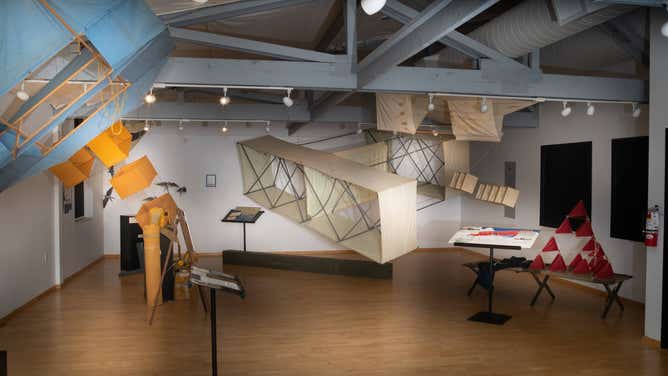
Kites in the World Kite Museum's War Room.
(J Brunner / The World Kite Museum)
According to Sayce, one example is a traditional box kite that was part of a life-sustaining kit kept in ocean-voyaging fighter planes.
"In that kit were canned fresh water and a rubber raft, a radio, a kite and the kite line that was actually a wire," Sayce said.
"The airmen would get into the raft, and the other items would be waterproof in a waterproof container, and you would take out the kite and assemble it, take out the radio and turn it on and plug in the antenna and launch the kite up."
"That would allow him to send a signal to be rescued," he said.
For the sake of science
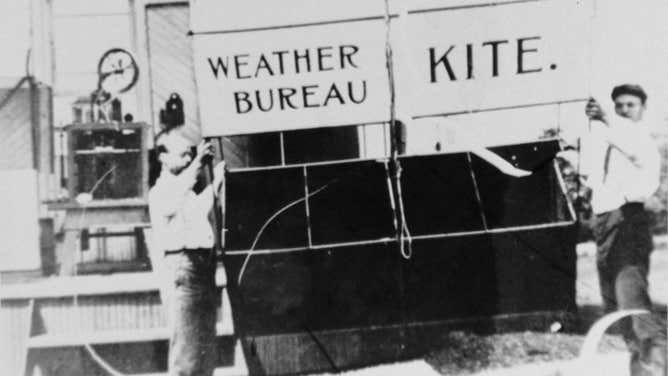
Two men prepare to launch a Weather Bureau kite. The Weather Bureau was created in the late 19th century, and its name was changed to the National Weather Service in 1970.
(NOAA Photo Library)
In addition to military purposes, kites were also used for science — particularly, weather science and flight.
"In the modern era, probably starting post-World War II, there was great interest in government agencies and getting more information on what's the air pressure up there," Sayce said.
In addition to air pressure, kites were used to measure temperatures at different strata, wind speeds and the heights of cloud layers.
"And why would you use a kite? Because it's way cheaper than an airplane," Sayce laughed. "When you think about the early days of airplanes, they were expensive and scientists are really cheap-minded. They want to get the data and they will use whatever tool they have."
"Kites were a very inexpensive tool to raise test instruments up, much like a weather balloon, except a kite could be raised probably faster and obviously didn't require helium or hydrogen gas to raise it up."
Although kites have been used in place of airplanes, they played a significant role in the development of human flight.

Orville Wright, stretched out face-down on the lower wing panel of the Wright brothers' Kitty Hawk, makes man's first flight in a powered plane in 1903.
(NY Daily News Archive )
According to the Smithsonian National Air and Space Museum, the first aircraft built by inventors Orville and Wilbur Wright was a biplane kite that had a wingspan of about 5 feet.
Built in July 1899, the kite allowed the Wright brothers to test a structural design and wing control system that turned out to be a success — just one of many steps that eventually helped them build the first successful airplane in 1903.
Soul flying
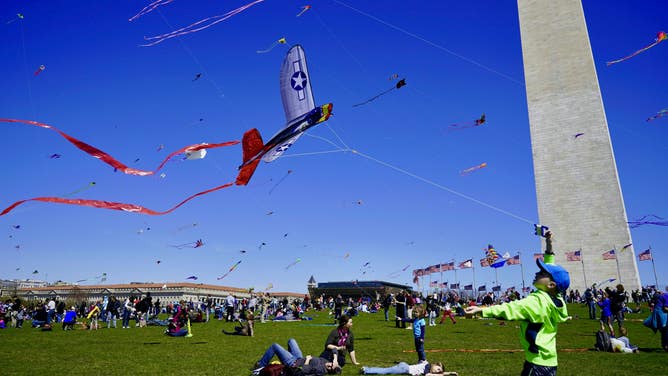
At the foot of the Washington Monument, a boy flies his airplane-shaped kite. He and many others have gathered at the National Cherry Blossom Festival's Kite Festival in Washington, D.C.
(Eva Hambach / AFP / Getty Images)
History has shown that kites have been a vehicle for human innovation.
"That sort of represents what is common among humans is that they love to create things," Sayce said.
"By doing that, they are de facto scientists because they're experimenting, and their success is their joy and they leave us the history, that's what makes kites so amazing."
